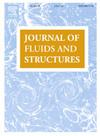CFD/CSD耦合仿真中一种有效的基于模态振型的RBF网格变形方法
IF 3.4
2区 工程技术
Q1 ENGINEERING, MECHANICAL
引用次数: 0
摘要
网格变形是CFD/CSD耦合时间推进仿真的重要组成部分。提出了一种基于模态振型的径向基函数插值(M-RBF)方法,提高了时间推进仿真中网格变形的效率。受振动理论中的模态展开定理的启发,根据模态振型预先选择一组插值节点,而不是根据每个时间步长的物理位移。提出了正向后贪婪算法的数据约简方案,以选择最优的插值节点集。利用AGARD 445.6机翼(跨声速颤振预测的基准模型)和Goland+机翼(气动配置和模态振型都很复杂)验证了M-RBF方法的准确性、效率和能力。结果表明,最优插值节点集在各时间步长对网格质量影响不大的情况下,能够达到理想的插值精度。在AGARD 445.6和Goland+ wing的情况下,传统的RBF网格变形(T-RBF)和基于前向贪婪算法的RBF网格变形方法(G-RBF)将大部分CPU时间用于线性系统求解(分别约占99%和77.6%)和插值节点的选择(分别约占87.7%和91.9%)。然而,通过消除重复节点选择的需要,我们的M-RBF方法可以比T-RBF方法提高2到3个数量级的网格变形效率,比G-RBF方法提高1到2个数量级。M-RBF方法对结构网格和CFD网格选择插值节点的比较表明,变形边界上节点的重要性可能与其与结构网格的距离有关。本文章由计算机程序翻译,如有差异,请以英文原文为准。
An efficient mode shape-based RBF mesh deformation approach via forward-backward greedy algorithm in CFD/CSD coupled simulation
Mesh deformation is an important element of CFD/CSD coupled time marching simulation. A mode shape-based Radial Basis Functions interpolation (M-RBF) approach is proposed to improve the efficiency of mesh deformation in the time marching simulation. Inspired by the modal expansion theorem in vibration theory, a set of interpolation nodes is pre-selected according to the mode shapes, rather than the physical displacements at each individual time step. The data reduction scheme of the forward-backward greedy algorithm is developed to select an optimum set of interpolation nodes. The AGARD 445.6 wing, a benchmark model for transonic flutter prediction, and the Goland+ wing with a tip store, which presents complexities in both aerodynamic configuration and mode shapes, are employed to validate the accuracy, efficiency, and capability of the M-RBF approach. The results show that the optimum set of interpolation nodes can achieve the desired interpolation accuracy while having little effect on the mesh quality at all time steps. The traditional RBF mesh deformation (T-RBF) and the RBF mesh deformation method via forward greedy algorithm (G-RBF) method spent majority of CPU time on the linear system solution (approximately 99% and 77.6%, respectively) and the selection of interpolation nodes (about 87.7% and 91.9%, respectively) in the case of AGARD 445.6 and Goland+ wing. However, by eliminating the need for repeated node selections, our M-RBF approach can improve the efficiency of mesh deformation by 2 to 3 orders of magnitude compared to the T-RBF method and 1 to 2 orders of magnitude compared to the G-RBF approach. The comparison of selected interpolation nodes by the M-RBF approach to the structural grid and CFD mesh indicates that the importance of nodes on the deforming boundary may be related to their distances from the structural grid.
求助全文
通过发布文献求助,成功后即可免费获取论文全文。
去求助
来源期刊

Journal of Fluids and Structures
工程技术-工程:机械
CiteScore
6.90
自引率
8.30%
发文量
173
审稿时长
65 days
期刊介绍:
The Journal of Fluids and Structures serves as a focal point and a forum for the exchange of ideas, for the many kinds of specialists and practitioners concerned with fluid–structure interactions and the dynamics of systems related thereto, in any field. One of its aims is to foster the cross–fertilization of ideas, methods and techniques in the various disciplines involved.
The journal publishes papers that present original and significant contributions on all aspects of the mechanical interactions between fluids and solids, regardless of scale.
 求助内容:
求助内容: 应助结果提醒方式:
应助结果提醒方式:


